Conservationist Todd Walsh has spent most of his life trying to protect the habitat of Tasmania’s giant freshwater crayfish. But he reckons there’s still a long way to go – like admitting Tassie’s “clean, green” status isn’t 100 per cent true.
IN AN OLD episode of The Goodies, Bill Oddie finds himself trying to protect the last surviving dodo in existence from his friends, who want to hunt it.
Eventually the poor bird dies in a plane crash and Bill declares that at least he knows the reason why they went extinct.
“They’re delicious,” he yells, biting into a giant drumstick.
Sadly, there is a lot of truth in that gag. Some animals, like the thylacine, were exterminated because they were considered a pest, killed for the bounty on their heads.
And others, like Tasmania’s giant freshwater crayfish, were driven to the precipice for similar reasons to Bill’s dodo: the enormous crustaceans, found only in the rivers of Tasmania’s North East and North-West Coast, were considered a delicacy.
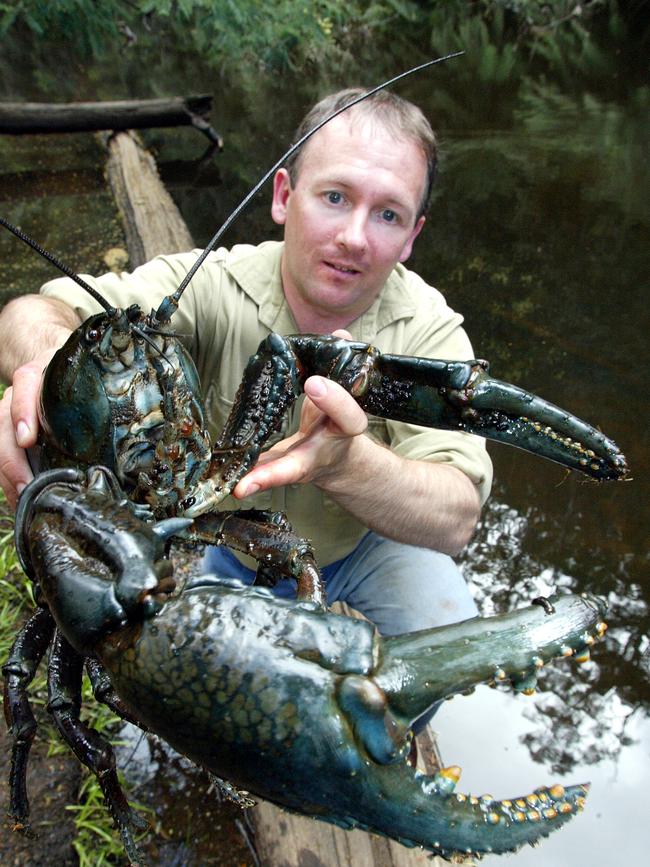
It has been illegal to catch giant freshwater crayfish since 1998, which was certainly a big help to these unique creatures, which are currently listed as endangered.
But, according to freshwater cray expert Todd Walsh, that is only half the battle won.
The biggest threat to the species these days is the poor state of the rivers and catchments they inhabit, and according to Walsh some could take thousands of years to recover.
In fact, Walsh has plenty of colourful words for describing the poor condition of Tasmania’s rivers and only a handful are fit to print.
As far as he is concerned, the difficulties the freshwater crayfish face in rebuilding their numbers is visible proof of just how bad our waterways are.
According to Walsh, at least three quarters of the rivers the crayfish live in have very concerning sedimentation problems, some being virtually uninhabitable for the animals.
“Some rivers I should be able to catch and check 50 crayfish a day and currently I can’t catch any,” he says.
“The rivers are so sedimented and full of crap, they’re ruined, and some of those rivers just aren’t fixable.
“For some of them, yeah, you can replant trees, keep cattle out, all those things, and it will help them recover. But some rivers will just need thousands of years for mother nature to wash sediment out, up to 10,000 years for some rivers.”
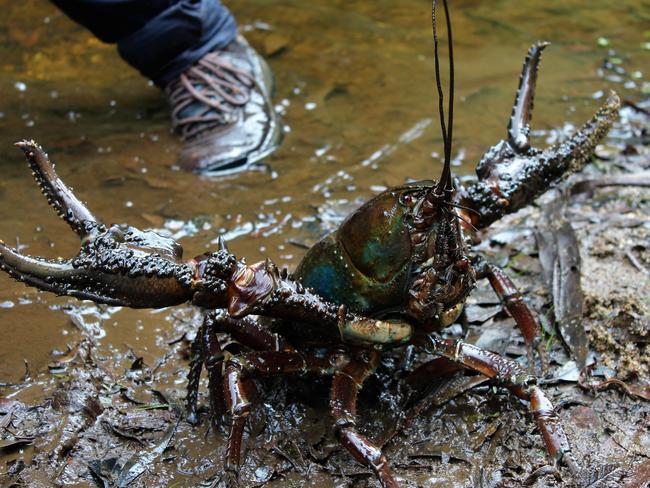
Born and raised at Smithton in the North-West, Walsh grew up in the heartland of the giant freshwater cray.
In fact, he grew up eating them, too.
“Oh yeah, I freely admit that,” he laughs.
“I come from a long line of people who used to catch and eat them. I used to have crayfish sandwiches at school.
“That’s part of what makes me perfect for studying them. I know where to find them and how to catch them. Just these days I don’t eat them, I microchip and tag them instead.”
Walsh is trained in freshwater habitat condition assessment and his business, Kanunnah, has been operating since 2007 with regular monitoring contracts with government, mining, agriculture and aquaculture clients.
He also specialises in surveying the special cray and is recognised as a world leading expert. He has tagged more than 2000 since 1998 and was awarded the Harry Bloom Memorial Prize in 2001 for individual contribution to the environment (Tasmania).
He was also awarded a certificate of contribution to Astacology (freshwater crayfish) worldwide.
Walsh lives in Lismore, NSW, but returns to Tasmania six times a year to survey the rivers for cray numbers and general health.
The giant freshwater cray is unique to the Tasmania, can live to the age of 60 and grow to the size of a medium dog.
It is the largest freshwater invertebrate in the world and some have been caught weighing more than 6kg.
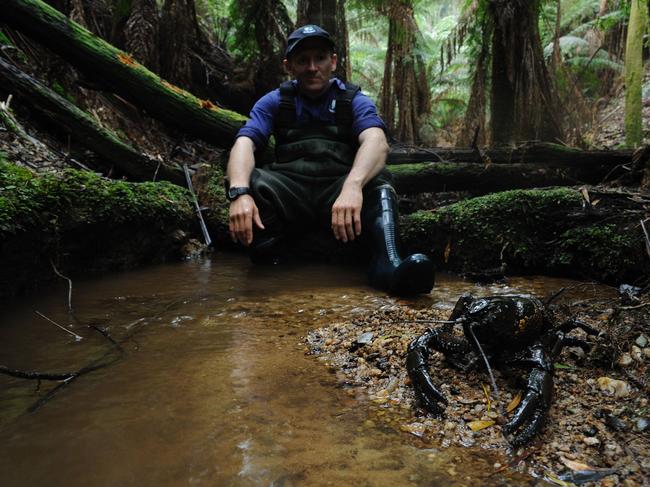
They are incredibly slow-growing.
A one-year-old crayfish is the size of a fingernail and even at the age of seven, they are only about the size of a person’s hand.
So when you consider it was the biggest mature crayfish that were overfished until 1998, leaving mostly younger, more vulnerable fish, it is clear why it will take decades to recover.
“One of the greatest pleasures I have in this job is finding a big one I tagged five or six years ago and seeing how much it’s grown,” Walsh says.
“I’m even finding some I tagged 12 years ago, one big female I’ve caught six times over the last decade.”
At full size, they have virtually no natural predators but this all changes when they have to moult their shells.
“There was this one big male I caught five years apart and he hadn’t moulted in all that time, he was the same size,” Walsh says.
“So it means some of the bigger ones will go five years at a time without moulting, which makes sense because it would be dangerous.
“When you’re the size of a corgi with only a soft shell, everything is going to try to eat you. They have to hide while the new shell grows, which is hard for the big ones.
“Moulting is what kills the big ones, it’s the only time they’re vulnerable. They can regrow lost legs, their organs don't deteriorate like those of mammals, they usually only die through some sort of injury.”
With humans essentially eliminated as the freshwater cray’s predator, their main threat is the destruction of their habitat.
Giant freshwater crays feed on rotting vegetation and occasionally smaller animals in their rivers and use rocks and logs as shelter, especially when younger and more susceptible to being eaten by other things like birds or platypus.
They need the shade of trees and bushes on riverbanks.
So one of the biggest threats to their survival is the degradation of their waterways, through mining, forestry and farming.
Much of this damage is historical, having been inflicted over decades of unsustainable practices that involved denuding vast areas of bush, clearing vegetation from riverbanks and polluting catchments that feed into creeks and rivers.
Forestry, mining and farming practices have evolved considerably over time, but Walsh says the damage is done.
“Any form of land clearing causes sedimentation in rivers because the vegetation holding the soil together has gone,” he says.
“And once that sediment builds up in a waterway, it can take hundreds or thousands of years to clear away completely.
“If you used 100 excavators for 100 years on a 30km stretch of sedimented river, sure, you might shift it all, but you’ll do vastly more damage to the river in the process.”
For an animal that relies on rocky riverbeds to survive, sediment is as good as a death sentence.
“It’s pretty hard to spot one juvenile crayfish among thousands of fist-sized rocks on the bottom of a river, but on big stretch of sand they stand out like a sore thumb and get eaten.
“They have nowhere to hide, their food supply is covered over as well, so they’re exposed and starving and their survival rates are low enough without that kind of interference as well.”
As such, Walsh, along with groups like Natural Resource Management North and Cradle Coast Natural Resource Management, spends a lot of time meeting with farmers and other landowners in giant freshwater crayfish territory, helping them to protect the crays on their properties.
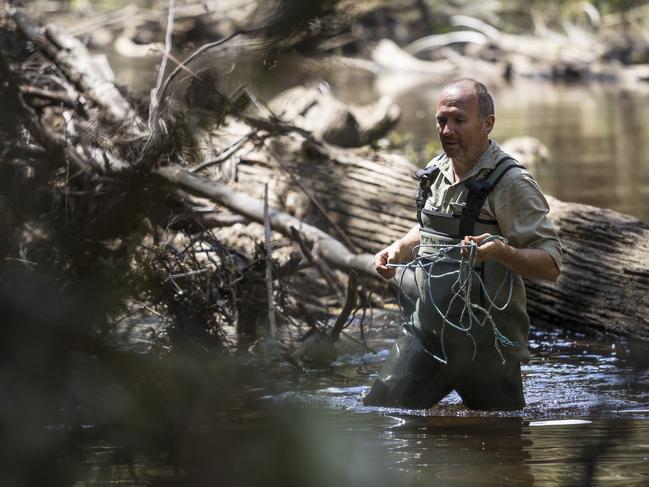
Erecting fences to stop cattle from walking into rivers is a main measure, along with establishing buffer zones along river beds and replanting riverbank vegetation.
And Walsh says the vast majority of landowners are more than happy to do their bit.
“I’m really encouraged by what most farmers are doing. Some will only ever see rivers as water sources to be used, but the majority are keen to manage their farms better and they love having clean rivers on their property again, especially when the crayfish come back.”
Fiona Marshall, agriculture project co-ordinator from Cradle Coast NRM, works on environmental improvement programs for the giant freshwater crayfish in North-West rivers and agrees there are concerns about the state of several rivers.
“Any kind of human development — agricultural, roads, forestry, whatever — as long as there is disturbance there is potential to cause problems for the crayfish with run-off and sedimentation. The rehabilitation and recovery of rivers will take decades but as long as there is good existing vegetation holding the banks together, providing shade and food, they stand half a chance.”
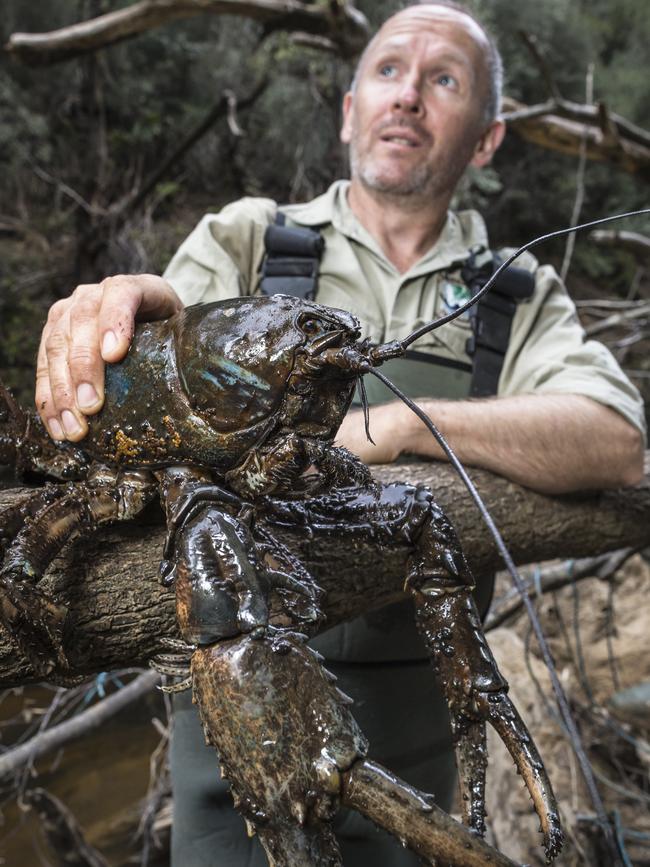
Walsh is optimistic about the crayfish’s chances of long-term survival, though.
Despite their threatened status, he says the population is actually quite high, albeit very sparse.
“I estimate there’s hundreds of thousands of them here but they’re spread out through hundreds of thousands of kilometres of streams and rivers,” he says.
“In rivers that are decimated, they aren’t coming back but the ban on fishing had a big impact on numbers, so in the good rivers I’m finding more of them and they’re getting bigger. So they’ll get there, as long as we stop making it worse, and it will take a long time.”
Walsh says the first step in solving the problem, though, is admitting that we have one.
He says Tasmania’s insistence on touting the “clean green” status of its waterways is one of the ways we avoid confronting a much more troubling reality.
“The worst damage in a lot of these rivers was done a century ago but in many places we are continuing to damage them and there are very few in the North East and North-West that I’d consider to be in good condition,” he says.
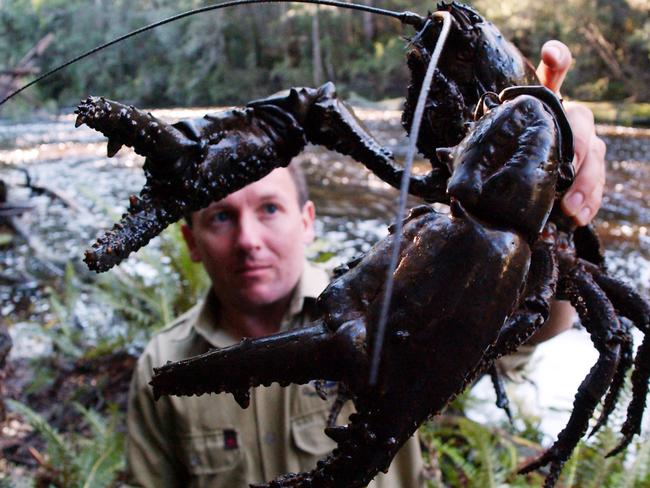
“We need to acknowledge that these rivers are in danger and start doing something about it instead of pretending everything is OK, because it’s not. And I’m willing to argue with any politician who disagrees with me. I will drive them to every major river and catchment in the state and point the problems out to you, that’s an open invitation.”

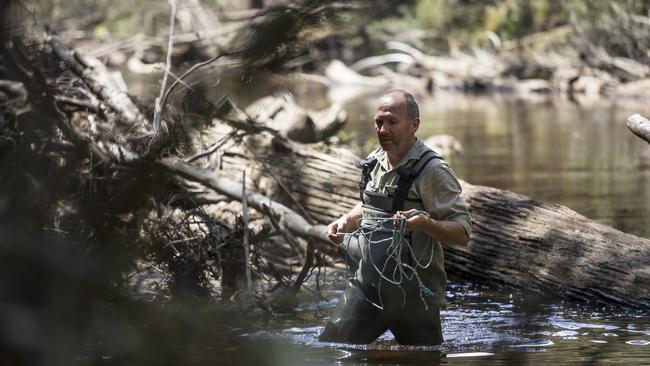
Add your comment to this story
To join the conversation, please log in. Don't have an account? Register
Join the conversation, you are commenting as Logout
‘Hands in full view’: Sitting on Santa gets child-safe makeover
The big guy in red has had a modern makeover, with Santas told to abide by these key child safety rules.
Smells like teen spirit: 90s-style summer awaits Aussie families
Aussie parents hope the social media ban will give kids the ‘1990s summer’ they enjoyed, full of exploration, adventure and real-life mates. Sounds like nirvana, right?